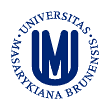



Full trisomy 13 is found in most cases. Translocation is present in 20% of the cases, mosaicism in less than 10%.
Patau syndrome, fetus:
 Patau's syndrome, trisomy 13, Macro, autopsy (72147)
Patau's syndrome, trisomy 13, Macro, autopsy (72147)
 Patau's syndrome, trisomy 13, polydactyly, Macro, autopsy (72149)
Patau's syndrome, trisomy 13, polydactyly, Macro, autopsy (72149)
 Patau's syndrome, trisomy 13, face, Macro, autopsy (72148)
Patau's syndrome, trisomy 13, face, Macro, autopsy (72148)
Patau syndrome, 28-week fetus:
 Patau's syndrome, trisomy 13, Macro, autopsy (73050)
Patau's syndrome, trisomy 13, Macro, autopsy (73050)
 Patau's syndrome, trisomy 13, Macro, autopsy (73051)
Patau's syndrome, trisomy 13, Macro, autopsy (73051)
 Patau's syndrome, trisomy 13, Macro, autopsy (73052)
Patau's syndrome, trisomy 13, Macro, autopsy (73052)
Patau syndrome:
 Trisomy 13, Patau, Macro, autopsy (73313)
Trisomy 13, Patau, Macro, autopsy (73313)
 Trisomy 13, Patau, Macro, autopsy (73314)
Trisomy 13, Patau, Macro, autopsy (73314)
Patau syndrome:
 Trisomy 13, Patau, Macro, autopsy (73315)
Trisomy 13, Patau, Macro, autopsy (73315)
 Trisomy 13, Patau, Macro, autopsy (73316)
Trisomy 13, Patau, Macro, autopsy (73316)
 Trisomy 13, Patau, Macro, autopsy (73317)
Trisomy 13, Patau, Macro, autopsy (73317)
 Trisomy 13, Patau, Macro, autopsy (73318)
Trisomy 13, Patau, Macro, autopsy (73318)
 Trisomy 13, Patau, Macro, autopsy (73319)
Trisomy 13, Patau, Macro, autopsy (73319)
 Trisomy 13, Patau, Macro, autopsy (73320)
Trisomy 13, Patau, Macro, autopsy (73320)
 Trisomy 13, Patau, Macro, autopsy (73321)
Trisomy 13, Patau, Macro, autopsy (73321)
 Trisomy 13, Patau, Macro, autopsy (73322)
Trisomy 13, Patau, Macro, autopsy (73322)
Another case:
 Syndrome Patau, Macro, autopsy (74414)
Syndrome Patau, Macro, autopsy (74414)
 Syndrome Patau, Macro, autopsy (74415)
Syndrome Patau, Macro, autopsy (74415)
 Syndrome Patau, Macro, autopsy (74416)
Syndrome Patau, Macro, autopsy (74416)
 Syndrome Patau, Macro, autopsy (74417)
Syndrome Patau, Macro, autopsy (74417)
 Syndrome Patau, Macro, autopsy (74418)
Syndrome Patau, Macro, autopsy (74418)